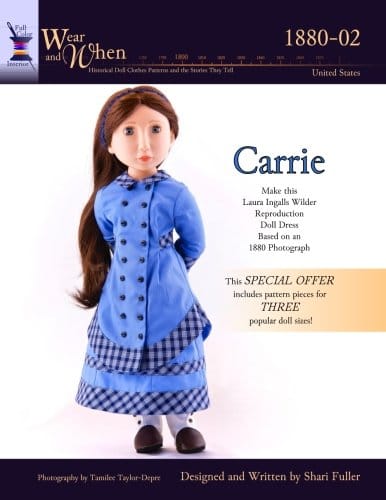Carrie: The Horror Classic That Launched Stephen King
Explore Stephen King's groundbreaking debut novel, Carrie: plot, themes, adaptations, and lasting cultural impact in this in-depth 800-word analysis.

Introduction
Few debut novels have announced the arrival of a writer quite as explosively as Stephen King’s 1974 horror classic, Carrie. The slim but potent book tells the story of Carrie White, an ostracized high-school misfit who discovers she possesses telekinetic powers, with catastrophic results. Nearly five decades later, the novel remains a touchstone for fans of horror, coming-of-age narratives, and social commentary. This article explores Carrie’s plot, themes, adaptations, and enduring cultural legacy.
Plot Overview
Set in the small town of Chamberlain, Maine, Carrie opens with a humiliating incident in a girls’ locker room when 16-year-old Carrie White experiences her first menstruation and is mocked by her classmates. The event triggers Carrie’s latent telekinesis, a power she barely understands. At home, she faces religious fanaticism and abuse from her mother, Margaret White, who views sexuality as sinful. When the kind-hearted Sue Snell convinces her boyfriend Tommy Ross to invite Carrie to the senior prom as an act of atonement, what begins as a hopeful night spirals into tragedy. A cruel prank involving a bucket of pig’s blood sends Carrie into a rage that unleashes her powers on the school and, ultimately, the entire town, leaving devastation in her wake.
The Tragic Heroine: Carrie White
Unlike many horror antagonists, Carrie White elicits profound sympathy. King paints her as a lonely girl starved for affection, stifled by her mother’s zealotry, and tormented by peers who sense her vulnerability. Her telekinesis becomes both a metaphor for untapped personal potential and a weapon forged by years of repression. Readers witness her fleeting moments of happiness—finding the perfect prom dress, dancing with Tommy—before the final humiliation shatters her fragile confidence. Carrie’s dual role as victim and avenging force makes her one of horror literature’s most complex characters.
Key Themes and Motifs
Bullying and social cruelty: King exposes the casual savagery of adolescence, showing how groupthink magnifies individual malice. The novel remains painfully relevant in an age of cyberbullying.
Religious fanaticism: Margaret White’s fire-and-brimstone beliefs depict how dogma can distort love and justify abuse.
Female sexuality and empowerment: Carrie’s telekinesis awakens alongside her first period, linking bodily change with burgeoning power. King taps into cultural anxieties about women gaining agency.
Outsider identity: The book resonates with anyone who has felt excluded, reminding readers that oppression can push the marginalized toward explosive ends.
Stephen King’s Writing Journey
When King began Carrie, he famously tossed the first pages in the trash, doubting his ability to write from a female perspective. His wife, Tabitha King, retrieved them and encouraged him to continue—a pivotal act that set his career in motion. Working nights as a school janitor, King drew on personal observations of locker-room dynamics and religious zealotry in rural Maine. The manuscript sold to Doubleday for $2,500, and a subsequent paperback auction netted a then-record $400,000, freeing King to write full-time.
Reception and Controversy
Critics praised Carrie for its raw emotional power and unflinching portrayal of adolescence. Some school boards, however, challenged or banned the novel for its violence, language, and religious content. The controversy only fueled public interest, propelling the book onto bestseller lists. Over time, scholars have positioned Carrie as a landmark in American horror, noting its blend of epistolary structure—newspaper clippings, interviews, and court transcripts—with conventional narrative, which lends an unsettling air of authenticity.
From Page to Screen: Film and Stage Adaptations
Brian De Palma’s 1976 film adaptation, starring Sissy Spacek and Piper Laurie, became a horror milestone, earning both actors Academy Award nominations. De Palma amplified the story’s operatic intensity with split-screen sequences and iconic imagery—most memorably, the blood-soaked prom queen framed against hellish flames. Subsequent versions include a 1999 sequel, a 2002 television movie, Kimberly Peirce’s 2013 remake, and a short-lived 1988 Broadway musical. While none eclipse the original film, each adaptation underscores the story’s malleability and ongoing relevance.
Cultural Legacy
Carrie infiltrated popular culture almost immediately. Phrases like “plug it up” became shorthand for misogynistic group bullying, while the image of a red-drenched girl in a prom gown remains one of horror’s most recognizable visuals. The novel opened doors for female-centered horror narratives and inspired countless works addressing teenage angst and supernatural revenge, from Ginger Snaps to Jennifer’s Body. Academics analyze Carrie through feminist, psychoanalytic, and sociological lenses, cementing its place in literary curricula.
Why the Story Still Resonates
Modern readers recognize the novel’s depiction of systemic cruelty in contemporary issues such as online shaming, purity culture, and school violence. Carrie’s plight raises questions about how communities fail vulnerable individuals and how unchecked hatred can spark cycles of retribution. Though grounded in the 1970s, these themes transcend time, making each new generation see itself reflected—sometimes uncomfortably—in Chamberlain High’s shattered mirrors.
Conclusion
Nearly 50 years after its publication, Carrie endures as more than a shocking tale of telekinetic terror. It is a poignant study of isolation, repression, and the catastrophic consequences of collective cruelty. Whether discovered on the page or on screen, Carrie White’s tragic story continues to challenge readers and viewers to confront the darkness that can flourish in ordinary halls and homes.



